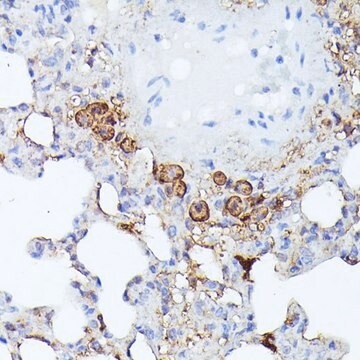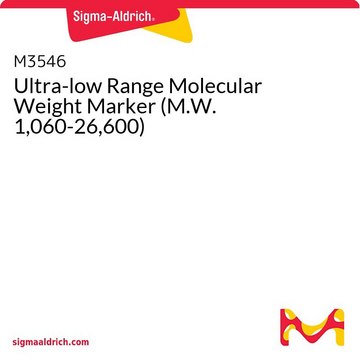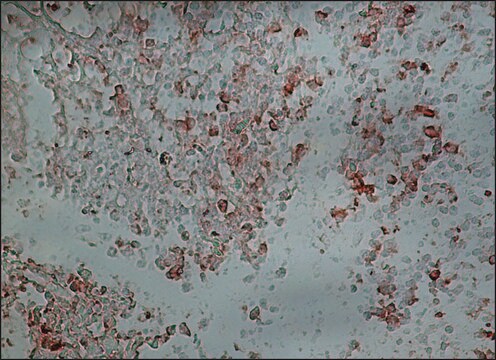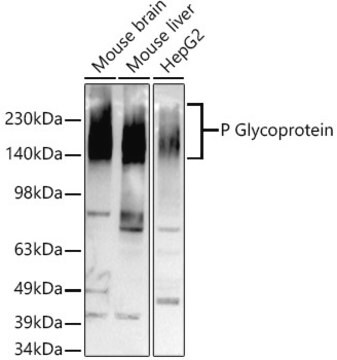Recommended Products
biological source
rabbit
Quality Level
antibody form
purified immunoglobulin
antibody product type
primary antibodies
clone
polyclonal
species reactivity
human, rat
manufacturer/tradename
Upstate®
technique(s)
western blot: suitable
isotype
IgG
NCBI accession no.
UniProt accession no.
shipped in
dry ice
target post-translational modification
unmodified
Gene Information
human ... SPRY2(10253)
Specificity
Recognizes SPROUTY2.
Immunogen
Peptide corresponding to amino acids 26-39 of human SPROUTY2
Application
Detect Spry2 using this Anti-Spry2 Antibody validated for use in WB.
Research Category
Signaling
Signaling
Research Sub Category
Growth Factors & Receptors
Kinases & Phosphatases
Growth Factors & Receptors
Kinases & Phosphatases
Quality
routinely evaluated by immunoblot in in RIPA lysates from HeLa and 3T3/A31
Target description
35-40 kDa
Physical form
Format: Purified
Protein A Purified immunoglobulin in 30% glycerol, 0.07M Tris-glycine, pH 7.4, 0.105 M NaCl, 0.035% sodium azide as a preservative.
Protein A purified
Storage and Stability
Maintain for 2 years at -20°C from date of shipment. Aliquot to avoid repeated freezing and thawing. For maximum recovery of product, centrifuge the original vial after thawing and prior to removing the cap.
Analysis Note
Control
Positive Antigen Control: Catalog #12-305, 3T3/A31 lysate. Add 2.5 μL of 2-mercapto-ethanol/100 μL of lysate and boil for 5 minutes to reduce the preparation. Load 20 μg of reduced lysate per lane for minigels.
Positive Antigen Control: Catalog #12-305, 3T3/A31 lysate. Add 2.5 μL of 2-mercapto-ethanol/100 μL of lysate and boil for 5 minutes to reduce the preparation. Load 20 μg of reduced lysate per lane for minigels.
Other Notes
Concentration: Please refer to the Certificate of Analysis for the lot-specific concentration.
Legal Information
UPSTATE is a registered trademark of Merck KGaA, Darmstadt, Germany
Disclaimer
Unless otherwise stated in our catalog or other company documentation accompanying the product(s), our products are intended for research use only and are not to be used for any other purpose, which includes but is not limited to, unauthorized commercial uses, in vitro diagnostic uses, ex vivo or in vivo therapeutic uses or any type of consumption or application to humans or animals.
Not finding the right product?
Try our Product Selector Tool.
Storage Class
12 - Non Combustible Liquids
wgk_germany
WGK 1
flash_point_f
Not applicable
flash_point_c
Not applicable
Certificates of Analysis (COA)
Search for Certificates of Analysis (COA) by entering the products Lot/Batch Number. Lot and Batch Numbers can be found on a product’s label following the words ‘Lot’ or ‘Batch’.
Already Own This Product?
Find documentation for the products that you have recently purchased in the Document Library.
Hiroshi Hanafusa et al.
Nature cell biology, 4(11), 850-858 (2002-10-29)
Sprouty (Spry) inhibits signalling by receptor tyrosine kinases; however, the molecular mechanism underlying this function has not been defined. Here we show that after stimulation by growth factors Spry1 and Spry2 translocate to the plasma membrane and become phosphorylated on
Valgardur Sigurdsson et al.
PloS one, 8(4), e60798-e60798 (2013-04-11)
Branching morphogenesis is a mechanism used by many species for organogenesis and tissue maintenance. Receptor tyrosine kinases (RTKs), including epidermal growth factor receptor (EGFR) and the sprouty protein family are believed to be critical regulators of branching morphogenesis. The aim
Permeen Yusoff et al.
The Journal of biological chemistry, 277(5), 3195-3201 (2001-11-08)
Several genetic studies in Drosophila have shown that the dSprouty (dSpry) protein inhibits the Ras/mitogen-activated protein (MAP) kinase pathway induced by various activated receptor tyrosine kinase receptors, most notably those of the epidermal growth factor receptor (EGFR) and fibroblast growth
N Hacohen et al.
Cell, 92(2), 253-263 (1998-02-11)
Antagonists of several growth factor signaling pathways play important roles in developmental patterning by limiting the range of the cognate inducer. Here, we describe an antagonist of FGF signaling that patterns apical branching of the Drosophila airways. In wild-type embryos
Yasuhiro Hasegawa et al.
Hepatology research : the official journal of the Japan Society of Hepatology, 49(3), 314-323 (2018-08-30)
Bile acid biosynthesis is strictly regulated under physiological conditions. The expression of fibroblast growth factor (FGF) 19 is induced when bile acids bind to the farnesoid X receptor in the intestinal epithelium. Fibroblast growth factor 19 is then transported by
Our team of scientists has experience in all areas of research including Life Science, Material Science, Chemical Synthesis, Chromatography, Analytical and many others.
Contact Technical Service








